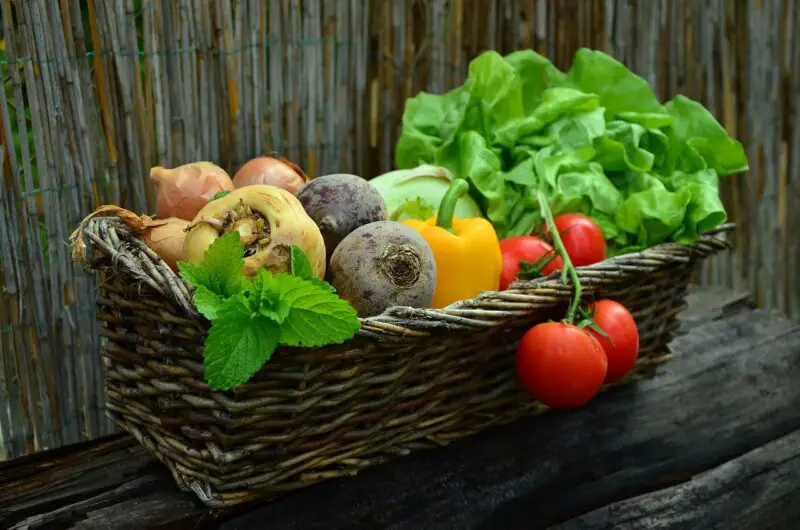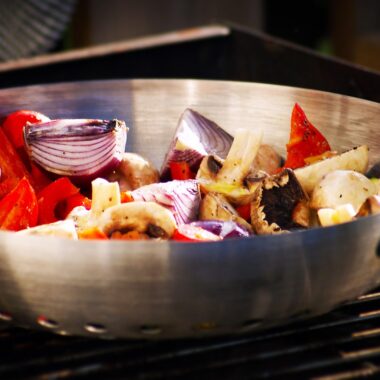Vegetables are universally celebrated as nutritional powerhouses, packed with vitamins, minerals, fiber, and antioxidants essential for maintaining health. But a question that often sparks debate among nutritionists, chefs, and health enthusiasts alike is whether vegetables are more nutritious when eaten raw or cooked. The answer isn’t as straightforward as it might seem—it depends on the vegetable, the cooking method, and the specific nutrients in question. In this article, we’ll dive deep into the science behind raw and cooked vegetables, explore how preparation affects their nutritional profiles, and offer practical guidance on maximizing their benefits.
The Case for Raw Vegetables
Eating vegetables raw preserves their natural state, which many argue maximizes their nutritional value. When vegetables are unprocessed by heat, their vitamins, enzymes, and phytonutrients remain intact—or so the theory goes. Let’s break this down.
- Preservation of Water-Soluble Vitamins
Vitamins like vitamin C and certain B vitamins (e.g., folate) are sensitive to heat and water. Cooking methods such as boiling can cause these nutrients to leach out into the cooking water or break down entirely. For example, raw bell peppers are a stellar source of vitamin C, providing about 150 mg per cup—more than twice the daily recommended intake for most adults. Boil them, and studies show you could lose up to 50% of that vitamin C content. Similarly, raw spinach retains more folate than its cooked counterpart, making it a go-to for those seeking this nutrient, which is crucial for cell division and prenatal health. - Enzyme Activity
Proponents of raw food diets often highlight the presence of natural enzymes in uncooked vegetables, claiming they aid digestion. While it’s true that enzymes like myrosinase (found in cruciferous vegetables such as broccoli) are more active in raw form, the human body already produces its own digestive enzymes. Still, these plant enzymes can enhance the bioavailability of certain compounds, like sulforaphane in broccoli, a potent antioxidant linked to cancer prevention. - Antioxidants and Phytonutrients
Many antioxidants, such as flavonoids and polyphenols, are heat-sensitive. Raw red onions, for instance, retain their quercetin—a powerful anti-inflammatory compound—better than when they’re sautéed or roasted. The vibrant colors of raw vegetables often signal high levels of these phytonutrients, which can diminish with cooking. - Texture and Fiber
Raw vegetables maintain their full fiber content, which supports digestion, regulates blood sugar, and promotes satiety. A crunchy carrot stick, for example, delivers insoluble fiber that aids bowel regularity, unaltered by heat-induced softening.
The Case for Cooked Vegetables
While raw veggies have their merits, cooking can enhance nutrition in surprising ways. Heat, when applied thoughtfully, can break down tough cell walls, unlock nutrients, and even boost the bioavailability of certain compounds. Here’s why cooked vegetables deserve a place on your plate.
- Increased Bioavailability of Nutrients
Some nutrients become more accessible to the body after cooking. Take lycopene, an antioxidant found in tomatoes. Raw tomatoes contain lycopene, but cooking them—especially with a bit of oil—can increase its bioavailability by breaking down cell walls and concentrating the compound. Studies suggest that cooked tomatoes (e.g., in sauces or soups) provide up to four times more absorbable lycopene than raw ones, offering greater protection against heart disease and certain cancers.
Similarly, beta-carotene in carrots and sweet potatoes becomes more bioavailable when cooked. Steaming or roasting these root vegetables can increase absorption by up to 6.5 times compared to eating them raw, thanks to the softening of fibrous structures that trap the nutrient. - Destruction of Anti-Nutrients
Certain vegetables contain compounds known as anti-nutrients, which can interfere with nutrient absorption. Oxalates in raw spinach and phytates in raw legumes, for instance, bind to minerals like calcium and iron, reducing their uptake. Cooking can reduce these anti-nutrients significantly—boiling spinach cuts oxalate levels by about 50%, making its calcium and iron more available to your body. - Improved Digestibility
Cooking softens tough fibers and complex carbohydrates, making vegetables easier to digest. Raw cruciferous vegetables like kale and cauliflower contain goitrogens, which can interfere with thyroid function in large amounts, especially if eaten raw. Lightly steaming or sautéing these veggies neutralizes goitrogens and enhances digestibility without sacrificing too many nutrients. - Concentration of Nutrients
Cooking methods that reduce water content, like roasting or baking, can concentrate certain nutrients. For example, roasted beets retain their potassium and magnesium levels while losing excess water, making each bite more nutrient-dense than a raw beet.
Vegetable-by-Vegetable Breakdown
Not all vegetables respond to cooking the same way. Let’s examine some popular veggies to see how raw and cooked versions stack up.
- Broccoli
Raw broccoli is rich in vitamin C and sulforaphane, both of which diminish with prolonged cooking. However, lightly steaming broccoli for 3-5 minutes can enhance sulforaphane availability by deactivating an enzyme (epithiospecifier protein) that inhibits its formation, while still preserving most of the vitamin C. Boiling, on the other hand, leaches out up to 33% of its nutrients. Verdict: Lightly steamed wins. - Tomatoes
As mentioned, cooking tomatoes boosts lycopene absorption, especially when paired with healthy fats like olive oil. Raw tomatoes still offer vitamin C and potassium, but their lycopene is less bioavailable. Verdict: Cooked takes the edge for antioxidant power. - Spinach
Raw spinach is a folate and vitamin C champion, but its high oxalate content limits mineral absorption. Cooking reduces oxalates and concentrates iron and calcium, though it sacrifices some heat-sensitive vitamins. Verdict: Depends on your nutrient priorities—raw for vitamins, cooked for minerals. - Carrots
Raw carrots provide fiber and a satisfying crunch, but their beta-carotene is trapped within tough cell walls. Cooking—especially steaming or roasting—unlocks this antioxidant, making it more absorbable. Verdict: Cooked for beta-carotene benefits. - Bell Peppers
These colorful veggies lose significant vitamin C when cooked, especially if boiled or fried. Raw peppers retain their full vitamin C load and offer a crisp texture. Verdict: Raw is superior here. - Garlic
Raw garlic contains allicin, a sulfur compound with antimicrobial properties, which is destroyed by heat. Cooking mellows its flavor and reduces allicin but preserves other antioxidants. Verdict: Raw for medicinal benefits, cooked for versatility.
Cooking Methods Matter
The nutritional impact of cooking isn’t just about whether you cook—it’s how you cook. Different methods yield different results:
- Boiling: This can strip water-soluble nutrients like vitamin C and B vitamins, especially if you discard the water. Tip: Use the cooking liquid in soups or sauces to retain lost nutrients.
- Steaming: A gentle method that preserves most vitamins and minerals while improving digestibility. It’s ideal for broccoli, carrots, and greens.
- Roasting/Baking: Concentrates flavors and nutrients but can degrade heat-sensitive compounds if done at high temperatures for too long.
- Sautéing: Quick cooking with oil can enhance fat-soluble nutrient absorption (e.g., vitamins A, D, E, K) without major losses.
- Microwaving: Surprisingly effective at retaining nutrients due to short cooking times and minimal water use.
Practical Considerations
Beyond nutrition, there are practical reasons to choose raw or cooked veggies. Raw vegetables are convenient—no cooking required—and retain their natural crunch, making them perfect for salads, snacks, or dipping. However, they can be harder to digest for some people, especially those with sensitive stomachs or conditions like irritable bowel syndrome (IBS). Cooked vegetables, meanwhile, are easier on the gut, more versatile in recipes, and often more palatable in larger quantities.
Taste also plays a role. Cooking can enhance flavors—think caramelized onions or roasted Brussels sprouts—while raw veggies offer a fresh, earthy taste that some prefer. Variety is key: alternating between raw and cooked ensures you get the best of both worlds.
The Myth of “Nutrient Loss”
A common misconception is that cooking universally “destroys” nutrients. While it’s true that some vitamins degrade with heat, others become more available, and the overall nutritional value doesn’t disappear—it transforms. For example, a study in the Journal of Agricultural and Food Chemistry found that while boiling spinach reduces its vitamin C by 50%, it increases its lutein (another antioxidant) content. The net effect on health depends on what your body needs most.
Who Should Choose Raw vs. Cooked?
Your choice might also depend on your health goals:
- Immune Boosting: Opt for raw bell peppers or citrus-rich salads for vitamin C.
- Eye Health: Cooked carrots or sweet potatoes for beta-carotene.
- Heart Health: Cooked tomatoes for lycopene.
- Bone Strength: Cooked spinach or kale to reduce oxalates and boost calcium absorption.
Striking a Balance
So, which is more nutritious—raw or cooked? The science suggests there’s no one-size-fits-all answer. Raw vegetables excel at delivering heat-sensitive vitamins and enzymes, while cooked vegetables unlock fat-soluble nutrients and improve mineral absorption. The healthiest approach is to incorporate both into your diet, tailoring preparation to the vegetable and your nutritional needs.
For example, toss raw spinach and bell peppers into a salad for a vitamin C boost, then roast some carrots and tomatoes for dinner to maximize beta-carotene and lycopene. Experiment with cooking methods—steam lightly, sauté with healthy fats, or roast at moderate temperatures—to preserve and enhance nutrients. And don’t shy away from variety; each vegetable brings its own unique profile to the table, whether raw or cooked.
Conclusion
The raw vs. cooked debate isn’t about picking a winner—it’s about understanding how to optimize what vegetables offer. Nature has designed these foods with a wealth of nutrients, and how we prepare them can either amplify or diminish their potential. By appreciating the strengths of both raw and cooked veggies, you can craft a diet that’s not only nutritious but also delicious and diverse. So next time you’re in the kitchen, don’t stress over the “right” choice—just enjoy the bounty of options and let science guide your fork.


















